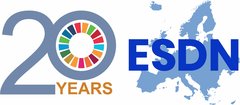INDICATIORS
Tuesday, 18 August 2020
The goals of the four areas of sustainable development in Estonia – viability of the Estonian cultural space, growth of welfare, social cohesion and ecological balance – have been defined in the national strategy “Sustainable Estonia 21” adopted in 2005. In the framework of sustainable development, all those areas are observed as a whole, meaning that development cannot be sustainable if one area improves while the situation in another area deteriorates.
“Indicators of Sustainable Development” was published by Statistics Estonia in 2018. In the survey conducted in 2011–2012, Statistics Estonia mapped and analysed the relevance and quality of the indicators of sustainable development used in Estonia. The renewal of sustainable development indicators started in 2016. The aim was to enclose indicators that help to measure the achievements in the fields of SDG-s so the next indicator based reports on sustainable development will give information about performance in Estonian sustainable development goals and also global SDG-s. New list of indicators was composed in cooperation of inter-ministerial working group, Estonian Statistics Office and Estonian Sustainable Development Commission in 2021.
The indicators for sustainable development are updated quarterly and can be found on the website of the Estonian Statistical Office. The implementation of SDGs is monitored through a mechanism based on Estonian sustainable development indicators and a regular data based reviews compiled by Statistics Estonia in co-operation with the Government Office and various ministries. All central governmental indicators are available in the online data-driven “Tree of Truth” that illustrates the status of the goals by governance areas.
There are more than 100 indicators (incl. 11 key indicators) with their trends available on Eurostat’s website for measuring progress towards the goals of the EU sustainable development strategy both on the EU level and in individual Member States.
